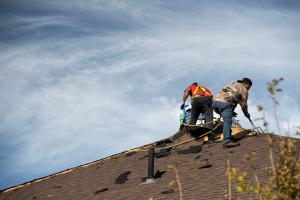Why Roof Ventilation Matters: A Key Factor in Roof Longevity
Over the years, I’ve seen perfectly good roofing materials fail early simply because the attic was acting like a sauna”
WISCONSIN RAPIDS, WI, UNITED STATES, August 14, 2025 /EINPresswire.com/ -- In the world of roofing, many factors determine how long a roof will last, but ventilation is often overlooked. Thad Brown, owner and founder of Dynamic Alliance Roofing LLC, has spent over 40 years on rooftops, and he says the science of airflow is as important as the quality of the shingles themselves.— Thad Brown
Proper ventilation isn’t just about letting a roof “breathe.” It’s a controlled system that manages airflow through the attic or roof space, helping maintain temperature balance, reduce moisture buildup, and protect the structural integrity of the home. When ventilation is inadequate, trapped heat and moisture can accelerate the aging process of roofing materials, leading to costly repairs far earlier than expected.
During summer, heat trapped in an unventilated attic can reach temperatures exceeding 150 degrees Fahrenheit. This extreme heat can cause shingles to warp or crack and can also transfer into the living spaces below, increasing the load on cooling systems. In winter, poor ventilation creates the perfect environment for condensation. When warm indoor air meets the cold underside of the roof deck, moisture forms. Over time, this can lead to rot, mold growth, and damage to insulation.
Roof ventilation typically relies on a balance between intake and exhaust systems. Intake vents, often installed in soffits, allow fresh, cooler air to enter the attic space. Exhaust vents, placed near the roof’s peak, release hot, moist air. This steady exchange of air keeps temperatures and humidity levels within an optimal range year-round. The design and placement of these vents are not random; they require an understanding of airflow patterns, roof pitch, and the size of the space being ventilated.
Thad Brown explains that problems often begin when homeowners add insulation without considering ventilation, or when they replace a roof without checking the existing airflow system. “Over the years, I’ve seen perfectly good roofing materials fail early simply because the attic was acting like a sauna,” Brown said. “Ventilation is the silent partner in protecting a roof.”
Beyond preventing damage, proper ventilation can also impact energy efficiency. By reducing heat buildup in summer, it can help maintain more consistent indoor temperatures and reduce strain on HVAC systems. In colder climates, effective ventilation helps prevent ice dams, which form when warm attic air melts snow on the roof, causing water to refreeze at the eaves. Ice dams can force water under shingles, leading to leaks and interior damage.
The signs of poor ventilation are often subtle at first—musty odors in the attic, visible mold, uneven shingle wear, or peeling paint on soffits. Addressing these issues early can extend the life of the roof and prevent more serious structural damage. Brown recommends that ventilation be evaluated during routine roof inspections, especially after extreme weather events or when making significant home improvements.
For homeowners considering a new roof, ventilation should be part of the conversation from the start. The right system will vary depending on roof design, climate, and the condition of the existing structure. Skipping this step or relying on outdated designs can result in the same problems resurfacing within just a few years.
In his decades in the industry, Brown has seen how changes in building codes and materials have shaped modern roofing practices. However, the core principle of ventilation remains unchanged: balance. Too much exhaust without sufficient intake, or vice versa, can disrupt airflow and create pressure imbalances. These imbalances may pull conditioned air from the home into the attic or allow moisture to infiltrate the structure.
Dynamic Alliance Roofing LLC continues to emphasize ventilation as an essential component of roof installation and maintenance. Brown’s experience in Wisconsin Rapids and surrounding areas has given him firsthand knowledge of how local climate conditions—hot summers, cold winters, and high humidity—affect roof performance.
“Good roofing work is about more than what’s visible from the curb,” Brown added. “It’s about creating a system that works together from the shingles down to the rafters. Ventilation is part of that system, and it should never be an afterthought.”
For those interested in protecting their investment, regular inspections that include a ventilation assessment can make all the difference. Addressing minor issues before they escalate not only extends the life of the roof but also preserves the comfort and safety of the living space beneath it.
As Brown’s four decades of experience have shown, a roof is only as strong as the conditions it endures—and the right ventilation system helps ensure those conditions remain under control.
Morgan Thomas
Rhino Digital, LLC
+1 504-875-5036
email us here
Visit us on social media:
Facebook
Legal Disclaimer:
EIN Presswire provides this news content "as is" without warranty of any kind. We do not accept any responsibility or liability for the accuracy, content, images, videos, licenses, completeness, legality, or reliability of the information contained in this article. If you have any complaints or copyright issues related to this article, kindly contact the author above.


